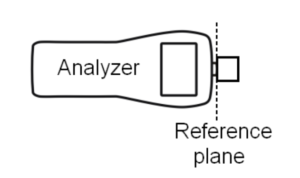Walt Maxwell (W2DU) made much of conjugate matching in antenna systems, he wrote of his volume in the preface to (Maxwell 2001 24.5):
It explains in great detail how the antenna tuner at the input terminals of the feed line provides a conjugate match at the antenna terminals, and tunes a non-resonant antenna to resonance while also providing an impedance match for the output of the transceiver.
Walt Maxwell made much of conjugate matching, and wrote often of it as though at some optimal adjustment of an ATU there was a system wide state of conjugate match conferred, that at each and every point in an antenna system the impedance looking towards the source was the conjugate of the impedance looking towards the load.
This was recently cited in a discussion about techniques to measure high impedances with a VNA:
WHEN the L and C’s of the tuner are set to produce a high performance return loss as measured by the vna, then in essence, if the tuner were terminated (where the vna was positioned) with 50 ohms and we were to look into the TUNER where the antenna was connected, we would see the ANTENNA Z CONJUGATE. Wow, that’s a mouth full. The best was to see this is to do an example problem and a simulator like LT Spice is a nice tool to learn. Or there are other SMITH GRAPHIC programs that are quite helpful to assist in this process. Standby and I will see what I can assemble.
The example subsequently described set about demonstrating the effect. The example characterised a certain antenna as having an equivalent circuit of 500Ω resistance in series with 4.19µH of inductance and 120pF of capacitance (@ 7.1MHz, Z=500-j0.119, not quite resonant, but very close). A lossless L network (where do you get them?) was then found that gave a near perfect match to 50+j0Ω. The proposition is that if you now look into the L network from the load end, that you see the complex conjugate of the antenna, Z=500+j0.119.
I asked where do you get a lossless L network? Only in the imagination, they are not a thing of the real world. Continue reading The system wide conjugate match stuff crashes out again
Last update: 25th January, 2020, 6:34 AM





